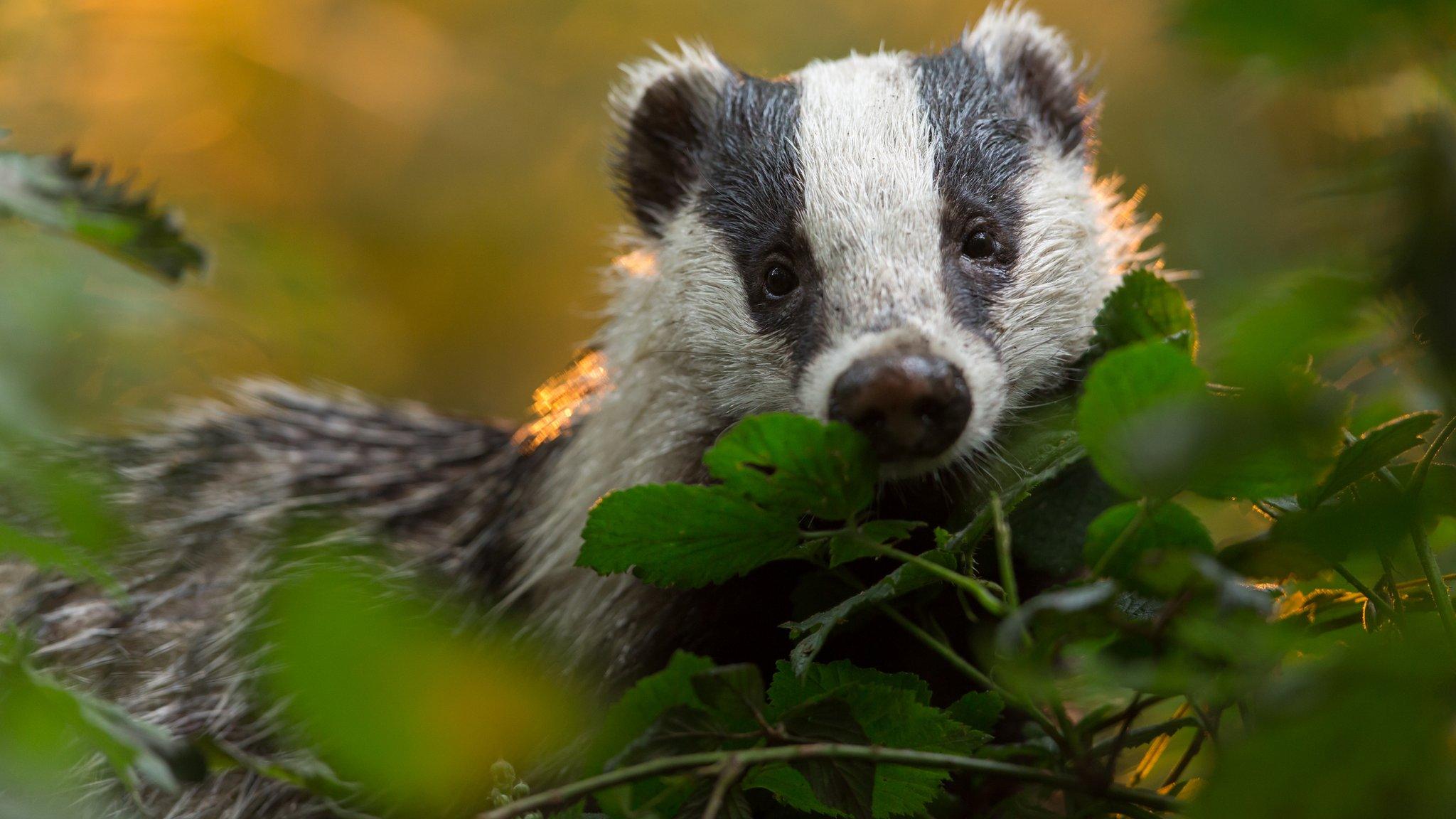The volunteers fighting to conserve NI's wildlife
- Published

Last year was a difficult one for the environment and conservation in Northern Ireland.
The images of blue-green algae on Lough Neagh and other waterways will stick in many people's memory.
Then in September, a report said Northern Ireland is now one of the most nature-depleted areas in the world.
The State of Nature report found that 12% of species assessed across Northern Ireland are under threat of extinction.
Alongside the bigger, better-known conservation groups fighting back against this are an increasing number of localised volunteer groups.
'We want to conserve these protected species'
In Northern Ireland, 50% of regularly breeding or wintering raptors (birds of prey) are red or amber listed due to declining populations or distribution.
The Northern Ireland Raptor Study Group was founded in 1991. It has 44 registered members and hundreds of supporters.
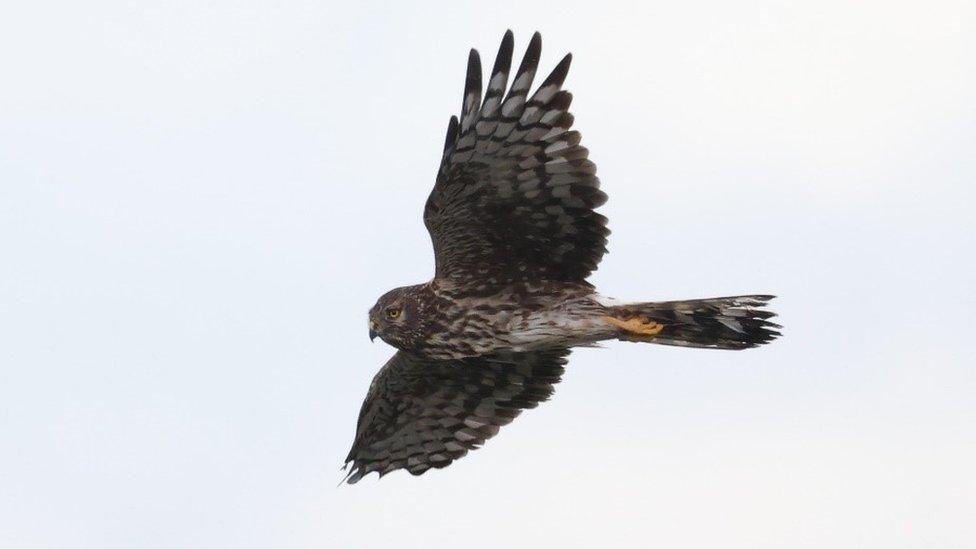
Hen harriers are now very rare in Northern Ireland
Its volunteers visit breeding and wintering sites to record the status of each species.
They also search for and document new sites.
"We want to conserve these protected species for all members of all communities and all parts of society to enjoy birds of prey," the group's Dr Eimear Rooney said.
"We want to build an enduring mechanism of a network of citizen-scientists to protect raptors for current and future generations."
Dr Rooney said the group's work was producing a number of tangible benefits to the bird of prey population.

Volunteers training with the NI Raptor Study Group
"For example we have seen the stabilisation of the peregrine falcon population no doubt due to round-the-clock surveillance at sites at risk of illegal persecution of these birds," she said.
"We have informed the Environment Agency on the population status of species in Special Protected Areas, we have informed Forest Service on harvesting plans to prevent disturbance of our most vulnerable of species and we have helped planning authorities to make informed decisions on the location and protection of vulnerable breeding or wintering sites.
"Suspected incidents of persecution - shooting, poisoning, trapping, nest destruction, egg and chick theft - are reported to PSNI and information gathered by volunteers is vital in our awareness of such incidents."
'What could we do to help?'
There are also smaller groups dedicated to specific raptors in Northern Ireland.
One of them is the Lough Neagh Barn Owl Group.
"We're four local lads, we live up in the Lough Neagh-Crumlin area and we've been keen all our lives on conservation and the native wildlife that we have," the group's Ciarán Walsh said.
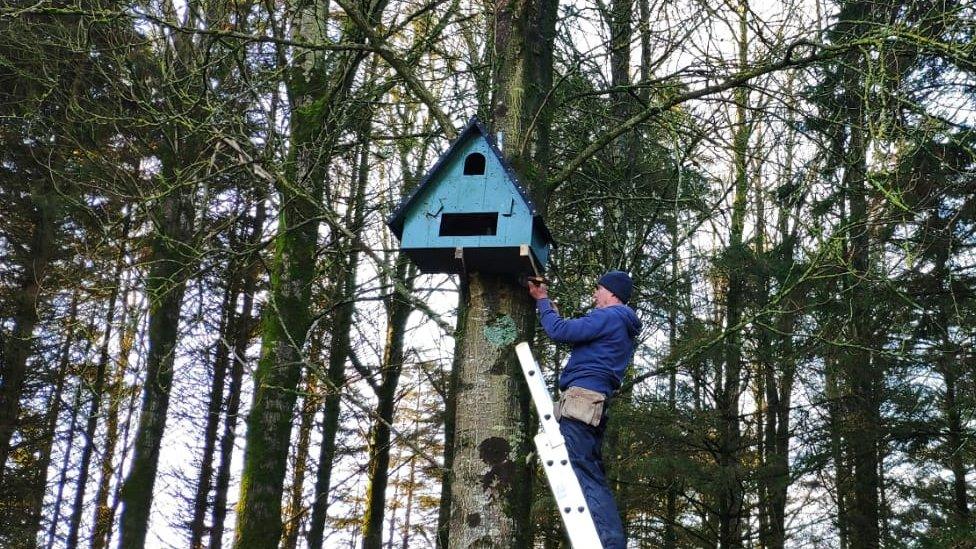
A member of the Lough Neagh Barn Owl Group fixes an owl box to a tree
He estimates there are currently just 50 to 60 breeding pairs of barn owls across Northern Ireland.
Mr Walsh and his fellow volunteers carry out a number of practical measures to try to help the birds.
"It's just basically build nest boxes, put nest boxes up, or get farmers to leave a bit of rough ground up on their land so that the mice will have somewhere to live and that will then draw the owls in for the mice," he said.
"It just slowly grew over the years and we started out with one nest with one owlet in it in the wild and built on that.
"Last season we had a total of six nests - two of the nests failed - but the other four sites produced 15 owlets for the year which is a massive number for us."
Thwarting the badger baiters
In October 2022, the Ulster Society for the Prevention of Cruelty to Animals (USPCA) said its intelligence indicated there could be up to 14,000 cases of badger baiting in Northern Ireland each year.
The Northern Ireland Badger Group was set up in 2006 by volunteers who wanted to do whatever they could to prevent such crimes.
Four years ago, together with the USPCA, it set up Operation Brockwatch.
"We worked with landowners, we set up cameras at setts and signage to protect the setts," the group's Peter Clarke said.
"At the minute we're protecting close to 30 badger clans throughout the province and that's continually growing.
"Some of the setts go back hundreds and hundreds of years."
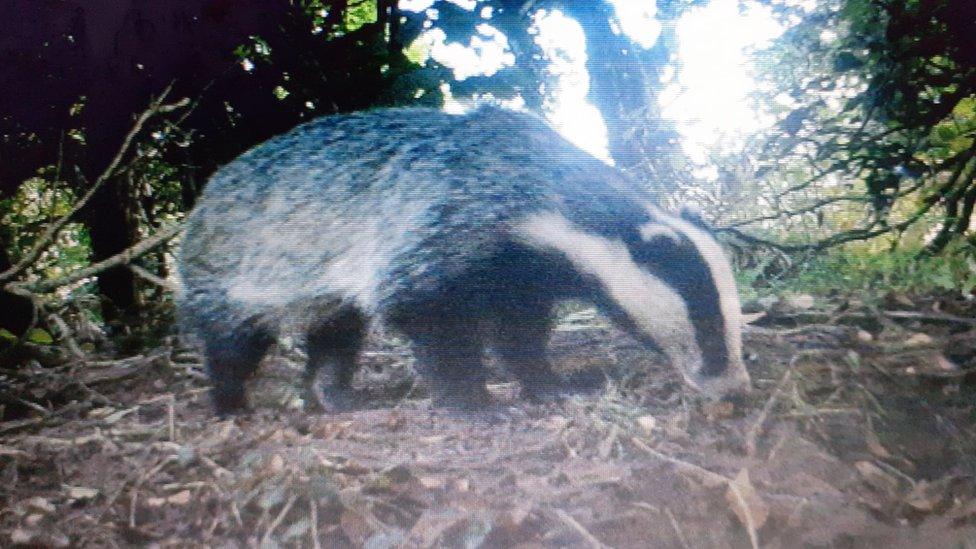
The group's cameras keep watch over 30 badger clans in Northern Ireland
Brockwatch is currently in operation in five Northern Ireland counties.
Mr Clarke said nearly all of the setts it watches are on farms and that it works closely with landowners.
"With the signage up, people don't know where the cameras are, so it would also act as a deterrent to fly-tipping and all sorts of things like farm theft," he said.
Mr Clarke said criminals involved in badger baiting can face prison and a fine of up to £20,000.

Peter Clarke says signage around setts can help to deter criminals
"We've started to trial live cameras so that people can get live shots sent straight back to their phone," he said.
"So if there's somebody there involved in criminal activity we can let the police know straight away."
Restoring red squirrel numbers
While grey squirrels are becoming an ever more common sight in Northern Ireland, the same cannot be said for the red squirrel.
A number of groups have been established across Northern Ireland to try to do something about this.
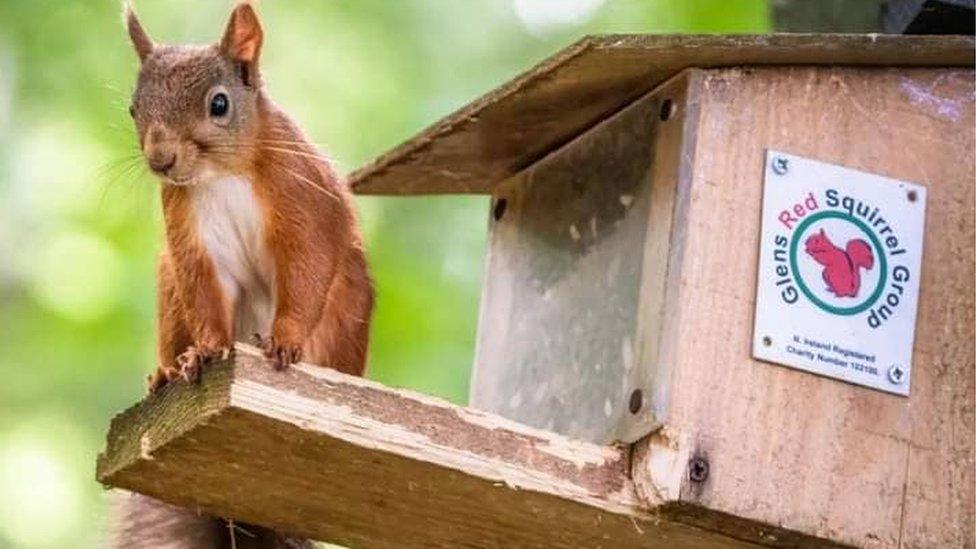
The Glens Red Squirrel Group says it is seeing an increase in the population of the animals in its area
Daniel McAfee is from the Glens Red Squirrel Group based in the Glens of Antrim since 2008.
"We were the second red squirrel group in Northern Ireland, now there are 14," he said.
"Part of the work that our volunteers do is going out into the woodlands, setting up feeders, putting cameras up so that we can see what's coming, whether it's red squirrels, grey squirrels or pine martins.
"We do a lot of educational visits with schools, walks and talks with anybody that'll really listen to us to highlight and promote red squirrels and our natural environment and local biodiversity."
The volunteers have also planted trees - with landowners' permission - on sites such as a two-acre field in Glenshesk.
"That's thinking for the future. It's all right us feeding the squirrels, but they're going to need to have the habitat that will sustain them in another 10, 20, 30 years," Mr McAfee said.
Another, difficult part of the the group's work involves the removal and culling of grey squirrels, which can starve out reds from an area and also spread disease to them.
As greys are an invasive species, it is illegal to release them after they have been trapped. Since 2011 the group has removed about 600 grey squirrels from the area they cover.
County Fermanagh is now regarded as grey squirrel-free after the pine marten was restored in the area.
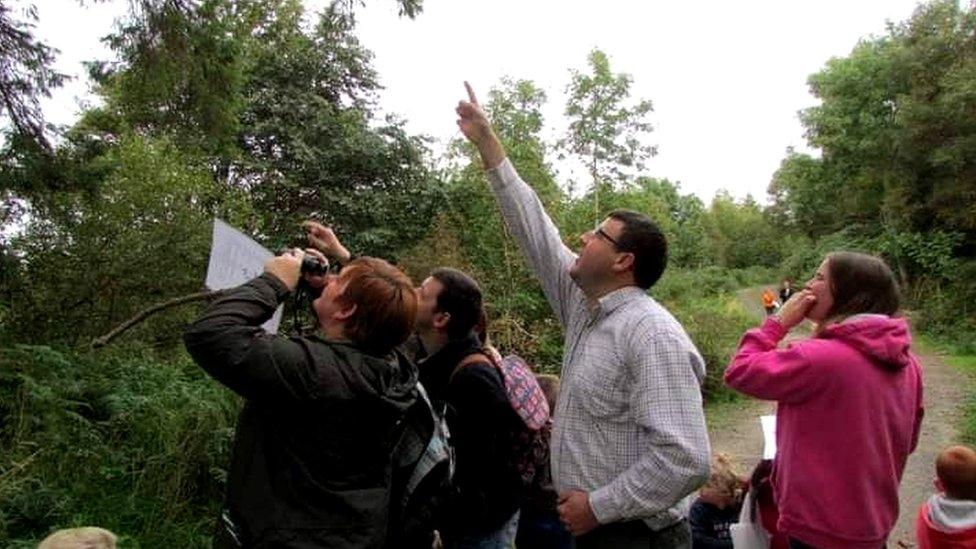
The group offers woodland walks where the red squirrels can be spotted
Mr McAfee said the group's efforts are producing results.
"We're seeing populations of reds that we hadn't got before and we're seeing the reds that are in the Glens actually expanding and moving out into new areas," he said.
The groups say they are filling a gap in Northern Ireland conservation by concentrating on smaller localised areas.
Dr Rooney from NI Raptor Study Group said the dedication of volunteers was "humbling".
"The amount of unpaid time and expertise dedicated to recording the environment around us by citizen scientists in Northern Ireland is incredible and cannot be underestimated," she said.
"The existence of voluntary groups is simply critical."
Related topics
- Published16 August 2022
